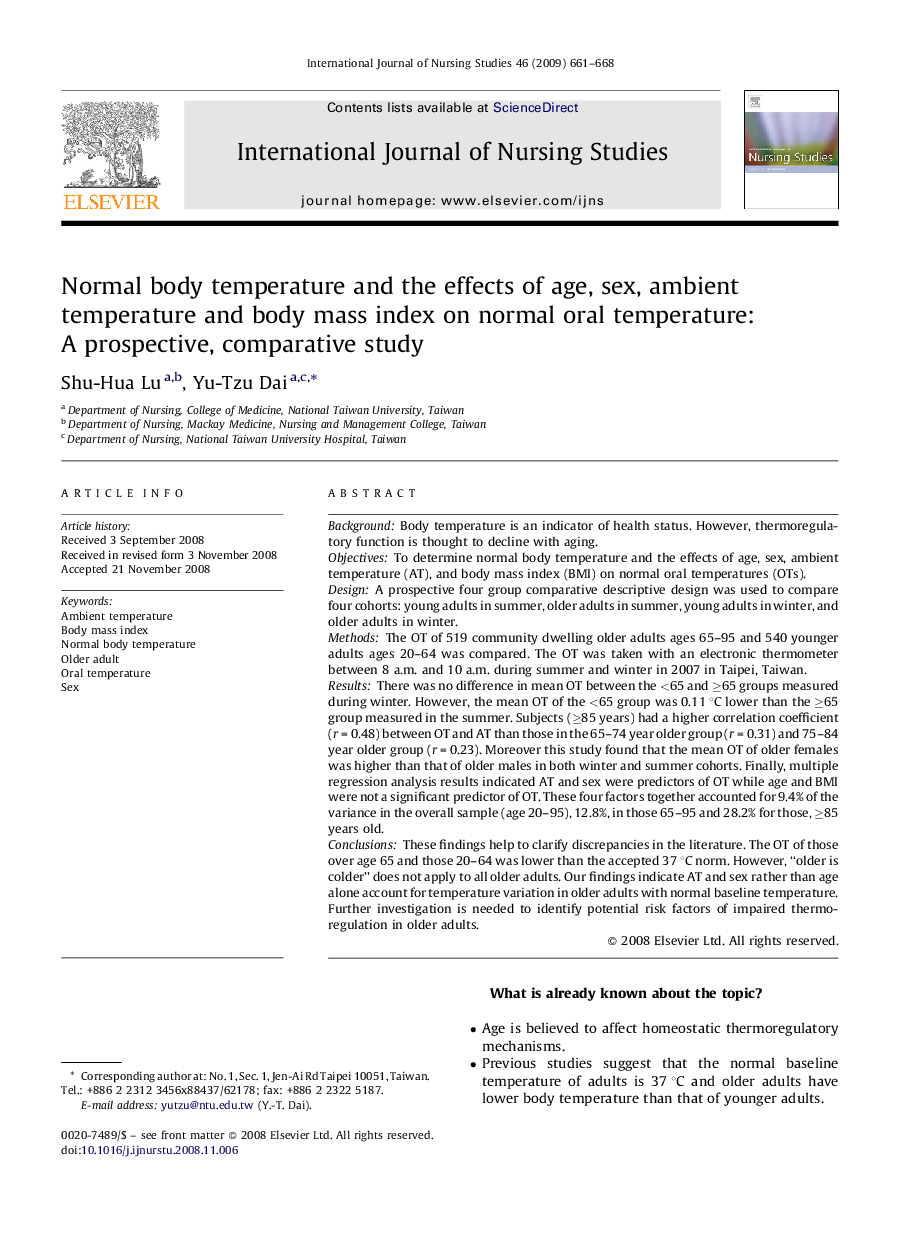| Article ID | Journal | Published Year | Pages | File Type |
|---|---|---|---|---|
| 1077179 | International Journal of Nursing Studies | 2009 | 8 Pages |
BackgroundBody temperature is an indicator of health status. However, thermoregulatory function is thought to decline with aging.ObjectivesTo determine normal body temperature and the effects of age, sex, ambient temperature (AT), and body mass index (BMI) on normal oral temperatures (OTs).DesignA prospective four group comparative descriptive design was used to compare four cohorts: young adults in summer, older adults in summer, young adults in winter, and older adults in winter.MethodsThe OT of 519 community dwelling older adults ages 65–95 and 540 younger adults ages 20–64 was compared. The OT was taken with an electronic thermometer between 8 a.m. and 10 a.m. during summer and winter in 2007 in Taipei, Taiwan.ResultsThere was no difference in mean OT between the <65 and ≥65 groups measured during winter. However, the mean OT of the <65 group was 0.11 °C lower than the ≥65 group measured in the summer. Subjects (≥85 years) had a higher correlation coefficient (r = 0.48) between OT and AT than those in the 65–74 year older group (r = 0.31) and 75–84 year older group (r = 0.23). Moreover this study found that the mean OT of older females was higher than that of older males in both winter and summer cohorts. Finally, multiple regression analysis results indicated AT and sex were predictors of OT while age and BMI were not a significant predictor of OT. These four factors together accounted for 9.4% of the variance in the overall sample (age 20–95), 12.8%, in those 65–95 and 28.2% for those, ≥85 years old.ConclusionsThese findings help to clarify discrepancies in the literature. The OT of those over age 65 and those 20–64 was lower than the accepted 37 °C norm. However, “older is colder” does not apply to all older adults. Our findings indicate AT and sex rather than age alone account for temperature variation in older adults with normal baseline temperature. Further investigation is needed to identify potential risk factors of impaired thermoregulation in older adults.
